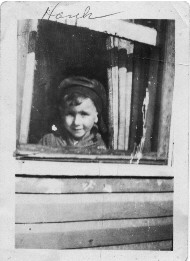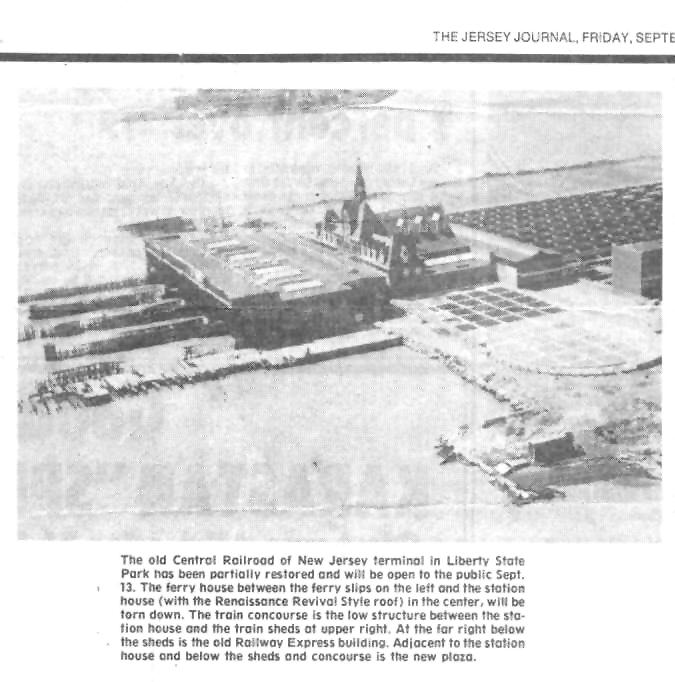
†
Many of us have unusual experiences growing up. In my Dadís case, one such experience was a part of his childhood spent living on a freight barge in New York harbor.

My paternal grandfather, Pieter Roos, joined the Dutch merchant marine service upon coming of age. He served as a fireman in the engine room, later being promoted to "donkeyman", that is being placed in charge of one of the steam engines used to hoist freight into and out of the shipís holds. Sometime around the First World War, his term of service ended while his ship was in New York, and he decided not to re-enlist. The ship on which he was serving would not return to Holland for some time, so Pieter chose to remain in New York until a more direct passage became available.
While waiting, Pieter found he liked New York, got a job and eventually met Regina Rosenberg (who had come from Germany to work as a nanny). They married, and in 1921 my father was born. Iím not sure what work my grandfather did during this time. I know he worked for a while as fireman on a railroad (Eire, I think). The alternating heat from the locomotive fire box and cold on the open tender deck made him ill, and ended his career as an engineman. I know he had skills as a carpenter and shoemaker, so he may have done work of this nature, or worked with engines and boilers in New York area industries.
When the depression hit, my grandfather was one of many who lost his job. He inquired after jobs on the waterfront, and a CNJ supervisor set him to sweeping out freight barges. When a call came in to move one of the barges, the barge captain could not be located. The supervisor asked my grandfather if he could handle the barge, and so his career in Jersey Central RR Marine Division service began.
 |
This is a picture of the pier near the CNJ terminal in Jersey City (I think) The reason for the photo may have been all the ice in the harbor. A railroad tug and the masts from a number of derrick scows are visible. My Dad believes this photo was taken by his Father. |
| Here is a news photo about the development of the passenger teminal at Communipaw (Jersey City) into a park. The news photo shows the terminal before demolition of the train sheds and pier. |  |
†
My Dadís family faced many of the problems common to that time (and even today) living in the New York metropolitan area. Their apartment was expensive, the landlord didnít want to pay for enough fuel to adequately heat the upper story apartments resulting in arguments between the landlord and my grand parents. The barges all contained living quarters for the captain, and families were allowed to live on the boats (this was convenient for the railroad since they didnít need to look for the captain in order to make unscheduled moves of the barge). So the family moved onto the barge, beginning several years adventure for my Dad.
|
This is a photo (from Warren Crater's "New Jersey Central Album") showing freight barge of the type my father lived on. This is the ONLY picture of such a barge I've come across. The figure seated on the end rail could, for all I know, be my grandfather! The section with the windows on the left is the captain's shelter. |
|
†
My grandmother quickly found that the barge could be moved at any time, making trips to shop or visit friends potentially interesting. She would occasionally return to the dock to find the barge gone. Then she would have to find out were it had been relocated, and find transportation (remember, the barge only moved around New York harbor). Once my grandmother returned from shopping with my father in a stroller, only to find a large freighter had been tied to the pier and the barge moved to the outside of the ship. Since it was a freight ship, there was no gangway such as a passenger liner uses. Pieter carried my father up a rope ladder, across the deck and down another ladder to the barge. My grandmother followed up the same ladder, while the stroller was placed in a cargo sling and transferred to the barge. My Dad remembers wanting to ride in the stroller as it was hoisted overhead!
Harbor children learn some different things from children elsewhere. My Dad learned to identify ships by their company markings, and knew all the railroad tugs by their whistles. Often My grandfather would be reading while waiting for a tug to move the boat (he and my Dad always called it "the boat", not "the barge") while Henry played. He would hear a tug whistle and start up, not having caught which tug had signaled. My Dad would pipe up "No, that oneís not for you Pop.".
My father remained on the barge until he was old enough to go to school, at which point the family moved ashore. Others chose not to do this, and I understand that the railroad made arraignments to pick up and return children from their home barge to their schools.
This page to be continued.
††
You are guest # |
|
This page hosted by
|